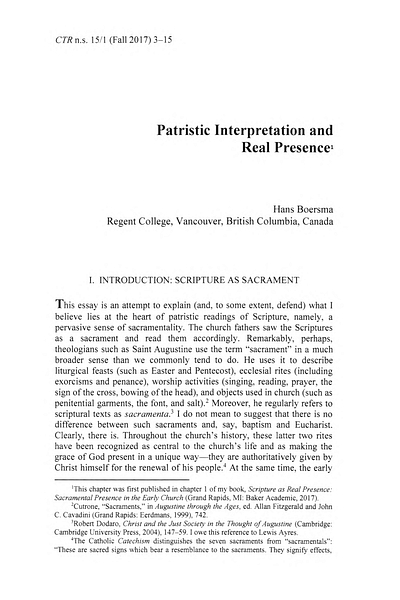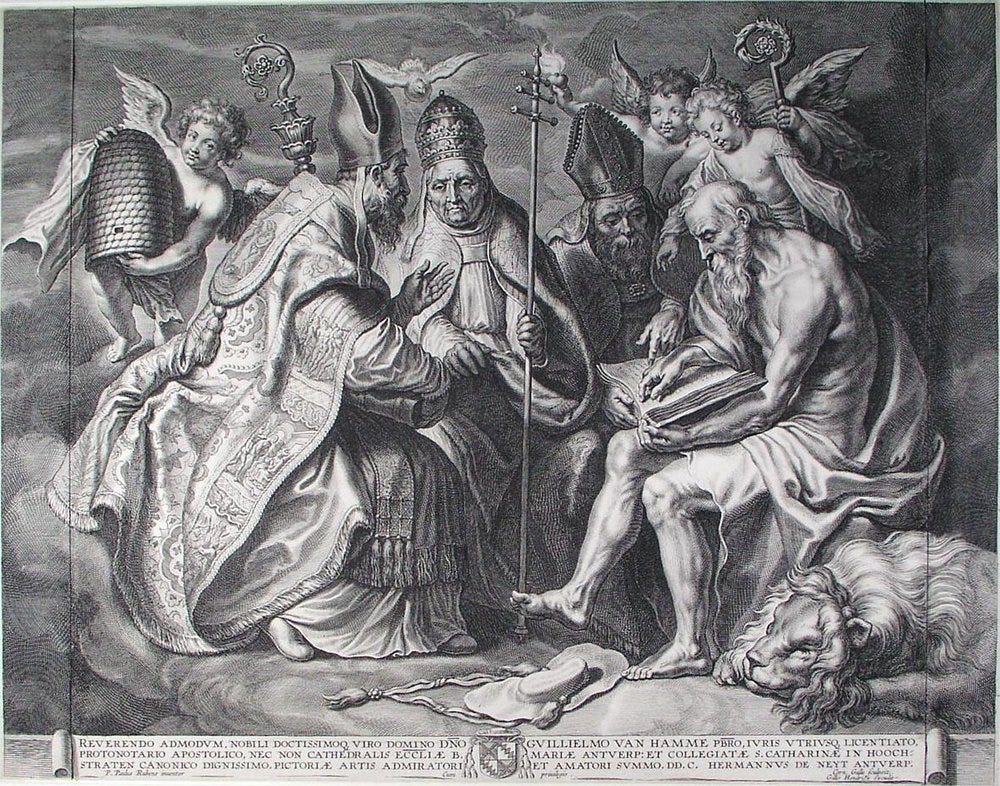Criswell Theological Review 15/1 (2017): 3–15
This essay is an attempt to explain (and, to some extent, defend) what I believe lies at the heart of patristic readings of Scripture, namely, a pervasive sense of sacramentality. The church fathers saw the Scriptures as a sacrament and read them accordingly. Remarkably, perhaps, theologians such as Saint Augustine use the term “sacrament” in a much broader sense than we commonly tend to do. He uses it to describe liturgical feasts (such as Easter and Pentecost), ecclesial rites (including exorcisms and penance), worship activities (singing, reading, prayer, the sign of the cross, bowing of the head), and objects used in church (such as penitential garments, the font, and salt).nMoreover, he regularly refers to scriptural texts as sacramenta. I do not mean to suggest that there is no difference between such sacraments and, say, baptism and Eucharist. Clearly, there is. Throughout the church’s history, these latter two rites have been recognized as central to the church’s life and as making the grace of God present in a unique way—they are authoritatively given by Christ himself for the renewal of his people. At the same time, the early church’s fluidity with regard to the term “sacrament” is helpful in reminding us that God uses not only baptism and Eucharist but also many other activities, rites, objects, people, and celebrations to fill the church’s saints with grace. It would not seem out of place, therefore, to add to Augustine’s list of ecclesial sacraments the Scriptures themselves. Holy Scripture too is a sacrament, inasmuch as it renders Christ present to us— but more about that anon.
DownloadPhoto by Cornelis Galle the Elder (Public Domain)



